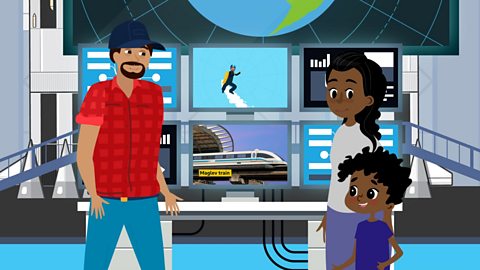The journey continues by hot air balloon, with Rian and Maya finding out about different types of flying machine.
Rian: How does this hot air balloon work, Aunty Maya?
Aunt Maya: Good question, Rian. Above us are our burners, which have a flame that heats the air in the balloon. The hot air inside the balloon is lighter than the cool air outside the balloon, so the balloon is lifted as the hot air rises. Throughout our journey we'll need to be careful to keep the air inside the balloon hot so we can keep flying. Ready for lift-off?
Rian: Yeah!
Aunt Maya: So as our balloon rises we're lifted up in our basket, and we're up, up…
Rian: And away! What an amazing invention!
Aunt Maya: I'll just check the wind is blowing us in the right direction.
Rian: Which way are we going?
Aunt Maya: We are meant to be travelling east across northern Africa. We can check on our navigation system.
Rian: We're going the right way.
Aunt Maya: Great. A hot air balloon was the first flying machine that could carry people. But people from all over the world had used flying for other reasons before. For example, people from China invented kites.
Rian: Like my kite at home.
Aunt Maya: A bit like that, but they weren't just used for fun like your kite. They flew kites high in the sky to send signals to people far away in other towns and villages. And people used trained birds, like pigeons, to carry messages.
Rian: Wow! Birds! I never knew you could train birds.
Aunt Maya: But it was the Montgolfier brothers in France who made the first hot air balloon that could carry people. In 1783 in front of the King and Queen of France the brothers launched a huge hot air balloon with a sheep, a cockerel and a duck in the basket underneath.
Rian: Why did they fly animals?
Aunt Maya: They wanted to test if the balloon was safe before sending humans up in it.
Rian: The animals must have been wondering what was happening.
Aunt Maya: Maybe. The balloon was made of a silky cloth and was decorated in blue and gold. It flew for three kilometres, almost 500 metres up in the sky. That's as high as a really tall skyscraper. The balloon landed safely and the animals were unharmed. So later that year, Jacques-Etienne Montgolfier became the first human being to fly up and away from the ground.
Rian: Amazing! Look Auntie Maya! A plane with two sets of wings.
Aunt Maya: That is a biplane. The first motor powered aeroplane was a bit like that and it was flown by the Wright Brothers in America in 1903. It was made from wood and cloth and used a propeller engine. As technology got better, planes were built with single sets of wings using stronger materials such as metal. They could fly much further and faster, even all the way across the oceans. Amelia Earhart was the first woman to fly on her own all the way from America to the UK, across the Atlantic Ocean.
Rian: Pretty impressive! How long did it take her?
Aunt Maya: It took her about 15 hours.
Rian: Do all planes have propellers on the front?
Aunt Maya: Most modern planes use jet engines that make the plane fly much faster. You can now fly across the Atlantic Ocean in about six hours.
Rian: Pretty fast.
Aunt Maya: And that's one of the things that is good about travelling in the air by plane - you can cover much bigger distances in a shorter amount of time. It's faster than any other type of transport.
Rian: Why doesn't everyone just fly everywhere then?
Aunt Maya: Because planes create pollution, which is bad for plants and animals and human beings. They also need a runway to take off and land safely, so they take up a lot of space.
Rian: Ah-ha. And what other flying machines are there?
Aunt Maya: There are helicopters that have long blades on the top that spin and lift it into the air.
Rian: It's a bit like a sideways propeller.
Aunt Maya: It is. And then there are gliders and hang gliders that just float on the wind and air.
Rian: And my favourite - rockets!
Aunt Maya: Yes. They are powered by a super powerful engine that blast them high into the sky.
Rian: All the way to space.
Aunt Maya: The first man and woman to fly in space were from Russia. And people have even used rockets to fly all the way to the moon and back.
Rian: Do you think we can fly to the moon on one of our trips?
Aunt Maya: Maybe. Let's see how we get on in the balloon first.
Video summary
In this episode Maya and Rian travel across northern Africa in a hot air balloon.
During their journey they discuss how a hot air balloon works, before learning about some other flying machines such as aeroplanes.
Maya tells Rian about the Montgolfier brothers - the first people to fly using hot air balloons.
She goes on to discuss the Wright brothers - who invented the first plane - and Amelia Earhart, the first woman to fly solo across the Atlantic Ocean.
They compare modern planes to early planes and discuss the pros and cons of air travel.
Questions to ask:
- How many different flying machines did you see in the video? What is your favourite?
- What were kites used for in the past?
- Who were the Montgolfier brothers and what did they invent?
- How does a hot air balloon work?
- Who was Amelia Earhart?
- Why do people not use aeroplanes for all their journeys (instead of cars or trains)?
Suggested activities
- Ask the children to share their experiences of travelling on aeroplanes. What other flying vehicles do they know about?
- Recreate the scene where the Montgolfier brothers first travelled using a hot air balloon, using role-play. The children could take the role of Jacques-Etienne Montgolfier, travelling up into the air for the very first time. Imagine what you would be able to see from all the way up in the hot air balloon. Write a letter to the King and Queen of France, describing how it felt to travel in the hot air balloon and trying to persuade them to have a go too! Have a go at drawing a picture of what you might see if you travelled in a hot air balloon over your school. This activity could also be used to help the children explore the story of the Wright brothers and the first aeroplane flight. Provide a role play area with old-fashioned clothes / hats etc, as well as an ‘aeroplane’ so the children can pretend to fly. Ask the children to write an account of their experiences on the aeroplane / hot air balloon, or as a witness from the ground. Describe how exciting it was.
- Ask the children to choose their favourite flying machine from the film and draw it or write a description of it.
- Look closely at a picture of the Wright brothers’ plane. How is it different from modern planes? Consider how it moved through the air, how many people it could carry, how far it could travel, etc.
- Find out more about Amelia Earhart and her journey across the Atlantic Ocean. Plot her journey on a map.
Resources
Teachers' notes. video
Download / print notes for the series (PDF)
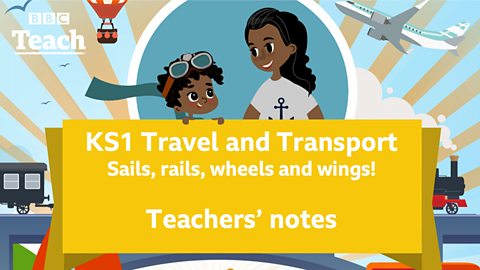
Sorting activity. document
Download / print (PDF)
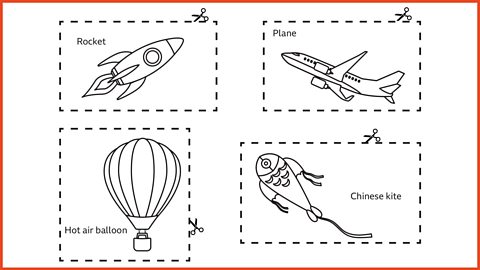
Colouring activity. document
Download / print (PDF)
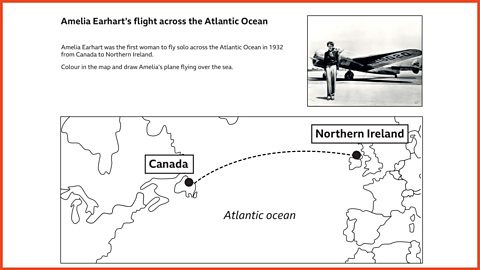
Other episodes in this series
1. Awesome animals. video
Rian and Maya set off, learning as they go how animals have been used throughout history for transport.
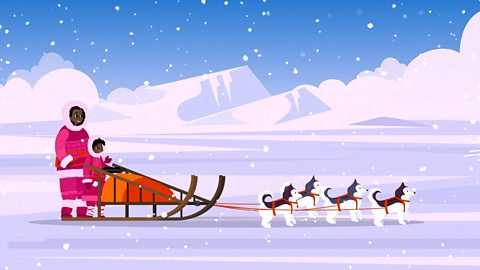
2. Wonderful wheels. video
A journey through the UK in an electric car with Rian and Maya finding out about wheeled transport.
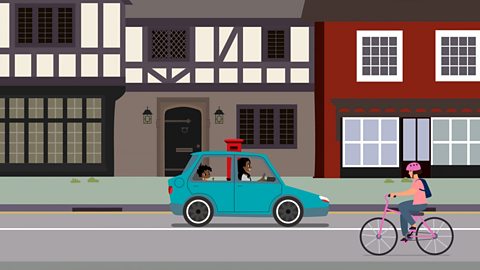
3. Brilliant boats video
Rian and Maya travel by sea to the continent of Africa and look at the history of boats.
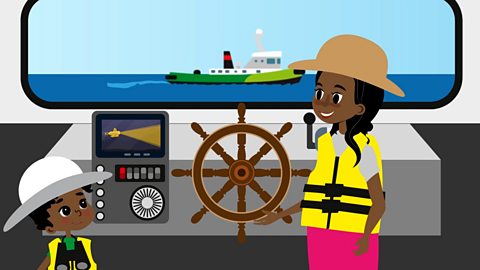
5: Tremendous trains. video
On a train journey across India, Rian and Maya learn about the history of rail travel.
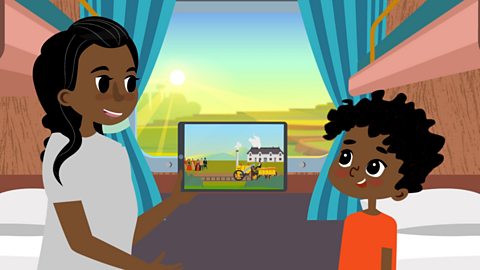
6. The future of transport. video
Maya and Rian are in Australia, where they travel in a driverless car to a 'Future of Transport' exhibition.
